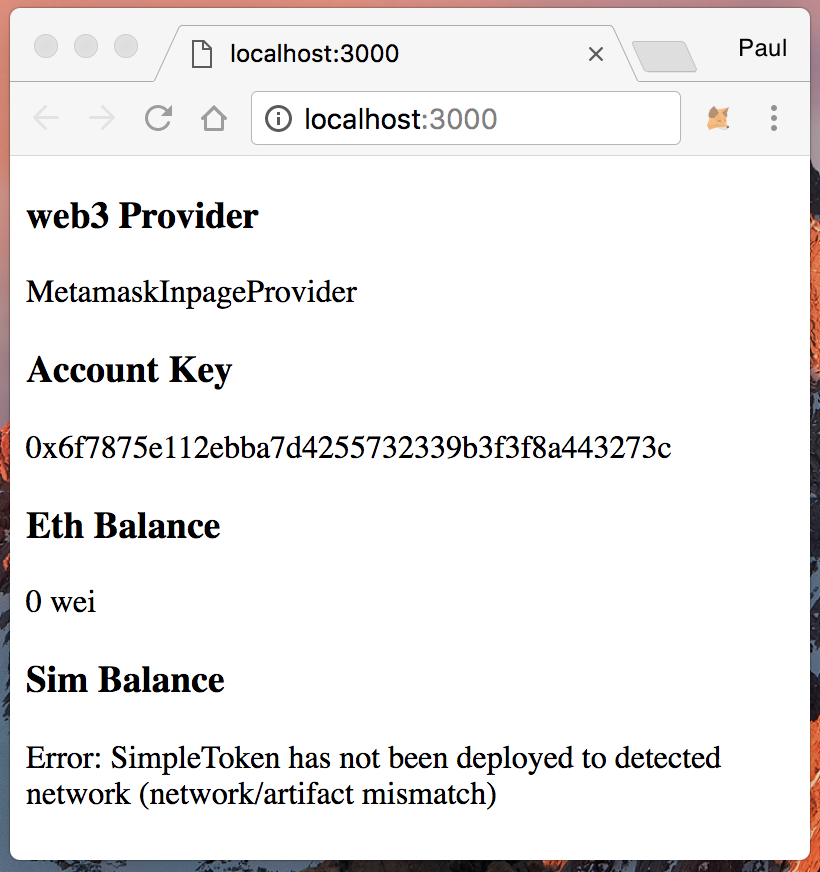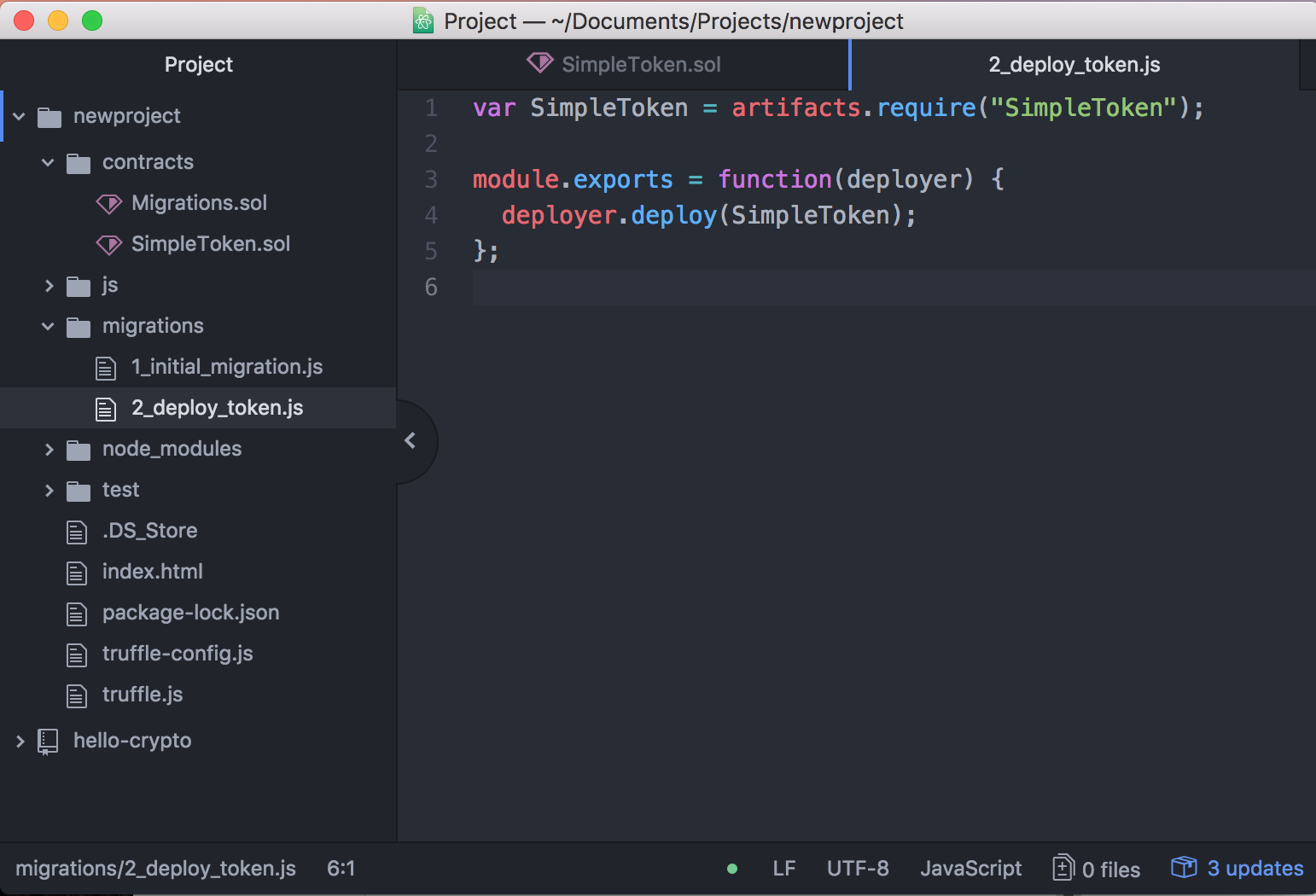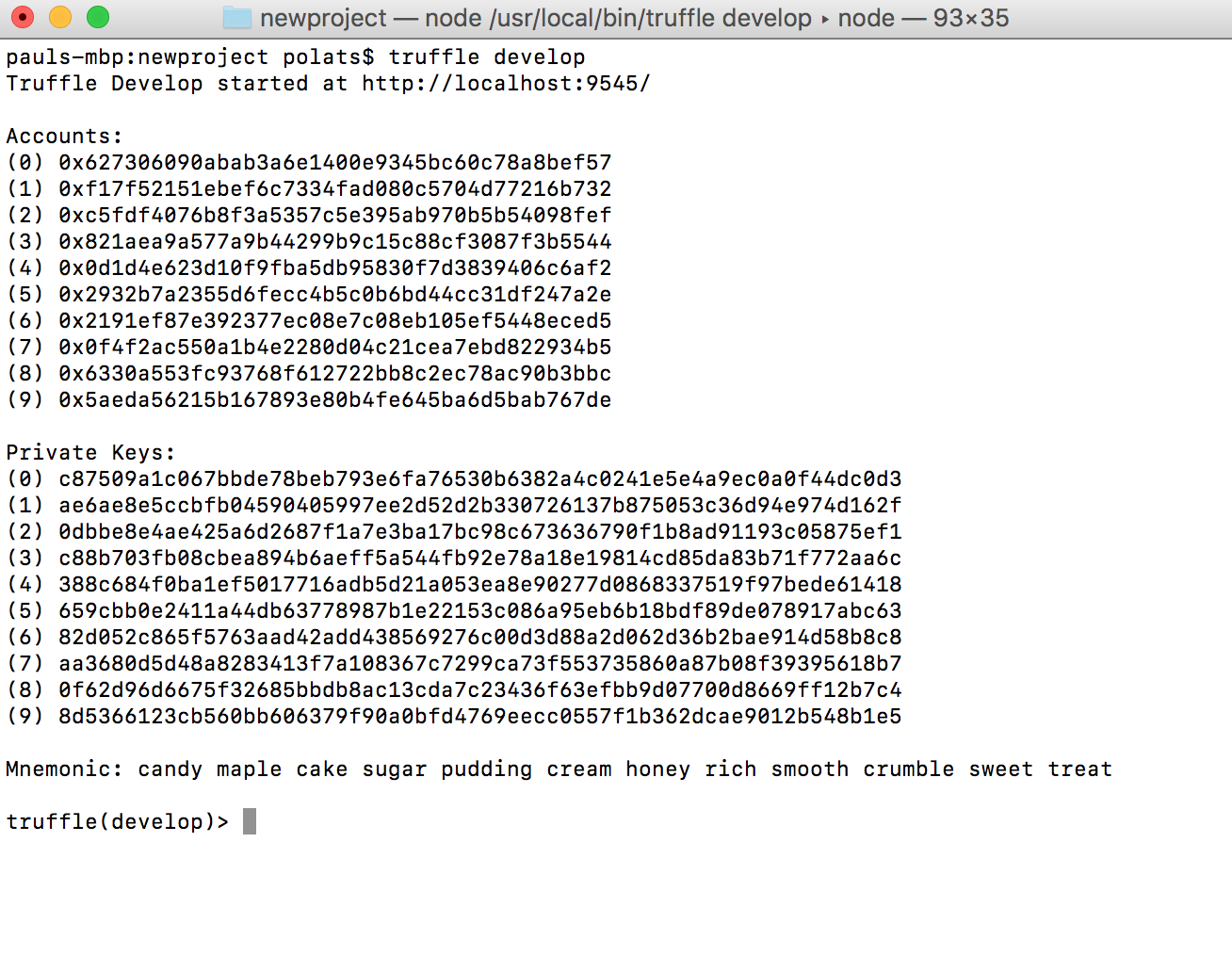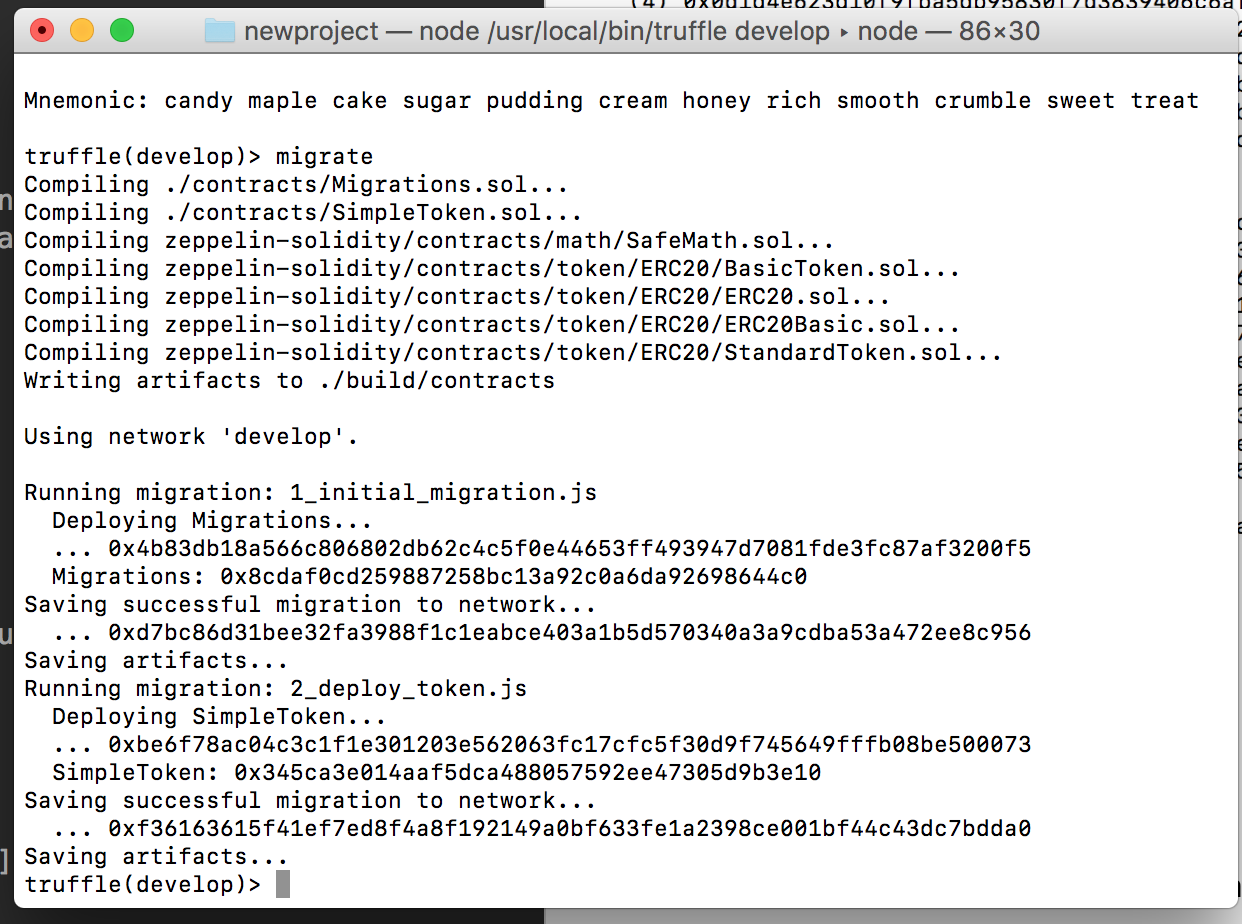The "Hello World" of blockchain and cryptogames! (ノ ˘_˘)ノ 。゜。゚
Live demo here: https://polats.github.io/hello-crypto
To just run the project, install Node and npm, and then run lite-server:
npm install -g lite-server
lite-server
If we want to learn how the pieces come together, it helps to go through the process of creating the Hello Crypto app ourselves.
We can break it down into 3 parts:
- (1) interacting with the Ethereum blockchain in your app,
- (2) creating our own ERC20 token, and
- (3) deploying it on the blockchain.
If you haven't yet, install the Metamask Extension on your browser.
In order to interact with the blockchain, we will need a wallet address from which to call transactions from. Currently the easiest way to create one is by using Metamask. And since we're making a web app, Metamask also conveniently provides us helper functions that we'll be using later.
Create a new directory, and then copy the following files from the Hello Crypto project onto that directory:
index-2.html
js/web3.min.js
js/truffle-contract.min.js
Rename index-2.html to index.html:
mv index-2.html index.html
The javascript libraries we copied over are web3.js, the Ethereum Javascript API and truffle-contract, a library to help us call Blockchain contracts.
Install lite-server and run the app:
npm install -g lite-server
lite-server
The browser should automatically start the web app from index.html and you should see a screen similar to the one below:
The app uses our wallet account in Metamask and the web3.js library to interact with the blockchain-- it queries the account's ETH balance, and uses Javascript to display them on the page. If your wallet has ETH it should show the current amount here.
Note: The SIM Balance error is expected, it appears since we don't have that custom token's smart contract deployed on the blockchain. We will fix that in the next section.
Creating a custom ERC20 Token is usually the first use case for those learning how to deploy smart contracts. We'll see how to do this using a simple workflow, and then integrate the ERC20 Token it with our web app.
Truffle is the easiest Ethereum development framework to learn, and is a good fit for us since we've already started using Node and NPM for our web app. Install it via the terminal:
npm install -g truffle
And then initialize our project by typing:
truffle init
Once done you'll see a bunch of new files and directories created in our project directory. These are Truffle's deployment scripts and config files.
We will be using the example token smart contract from OpenZeppelin. This is a good starting point as they're peer-reviewed smart contracts that follow standards defined by the community. We can use them by simply downloading them also from npm:
npm install @openzeppelin/contracts
You should see a node_modules/@openzeppelin folder once the command completes.
This is almost a copy of @openzeppelin/contracts/token/ERC20/ERC20.sol which implements the IERC20.sol contract interface but instead of having private member variables we will leave them as public.
This is our own ERC-20 custom token which inherits from StandardToken.
We then need to add a deployment script to the migrations folder so that truffle can deploy our SimpleToken to a blockchain. Create a 2_deploy_token.js file in the migrations directory, and add the following lines:
var SimpleToken = artifacts.require("SimpleToken");
module.exports = function(deployer) {
deployer.deploy(SimpleToken);
};
We now setup a local test blockchain by using Truffle, which can be done simply by typing:
truffle develop
Once successful we should see the same screen, with us entering the truffle develop console.
Now that we have a local test blockchain, we can try deploying the SimpleToken contract that we copied from OpenZeppelin. We can do this from within the truffle develop console by typing in:
migrate
This will compile our smart contracts into JSON under the build folder, and also deploy the smart contracts unto the local blockchain. A successful run would look similar to the screen below.
Congratulations, you have just deployed an ERC20 Token onto a blockchain! (It's on a local development blockchain for now, we'll see how to deploy to live blockchains in the next section)
Now that we've deployed our contract on a local blockchain, let's see it in action on our web app. Go back to our running web app on the browser (if you closed it, open a new tab and start lite-server again).
In Metamask, change the network that we're connecting to by clicking the dropdown on the upper left of the extension's page. Select Custom RPC, and input the default host used by truffle develop: http://localhost:9545/
You should see the error we had previously is now gone, as our web app is now successfully querying the custom token balance from the local blockchain.
Note: Truffle uses the first account in Truffle develop as the contract creator. In the screenshot above, we imported that account in Metamask using its private key. As the OpenZeppelin SimpleToken sets the contract creator as the holder of all the initial supply of our custom token, we see that the Truffle Account's Sim balance contains exactly that.
(optional) interact with contract on truffle console
Send ETH
web3.eth.accounts
contract creator is web3.eth.accounts[0]
recipientAccount = web3.eth.accounts[1]
web3.eth.getBalance 0 and 1
web3.eth.sendTransaction({from:Account1, to:Account2, value: 10000})
Send SIM
contractInstance = SimpleToken.deployed().then(i => contractInstance = i)
contractInstance.totalSupply
contractInstance.balanceOf(web3.eth.accounts[0])
contractInstance.balanceOf(recipientAccount)
What is Big Number?
contractInstance.transfer(recipientAddress, 5000)
check new balance
(optional) Setup web3 javascript console
Perform previous ETH transfer operations
web3.eth
add truffle-contract.min.js
load simpleToken json
return balance
Add make-it-rain.html
III. Deploy on the Blockchain
To interact with the blockchain, we’ll need to have our own wallet account. We’ve been using Truffle develop accounts, but now we should use our own by creating one
Install Metamask, remember mnemonic
Get some ETH from faucet inside metamask
setup HDWallet provider, then connect to ropsten migrate
Change make-it-rain settings to call ropsten on testnet instead
Change settings to use ETH instead
Show deployed website





